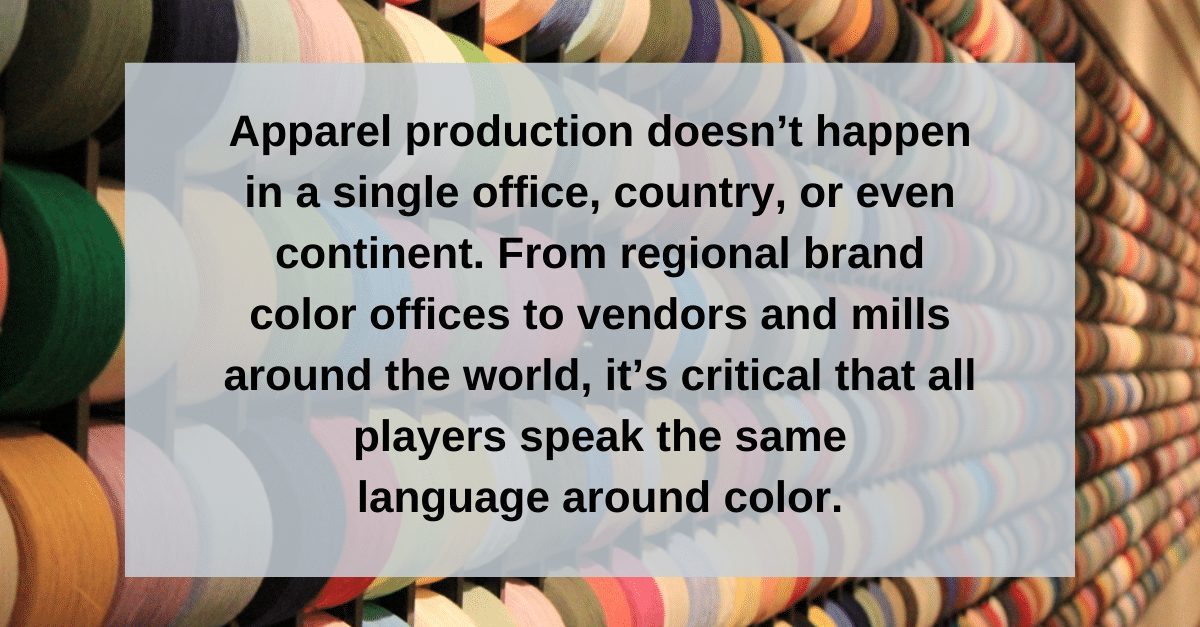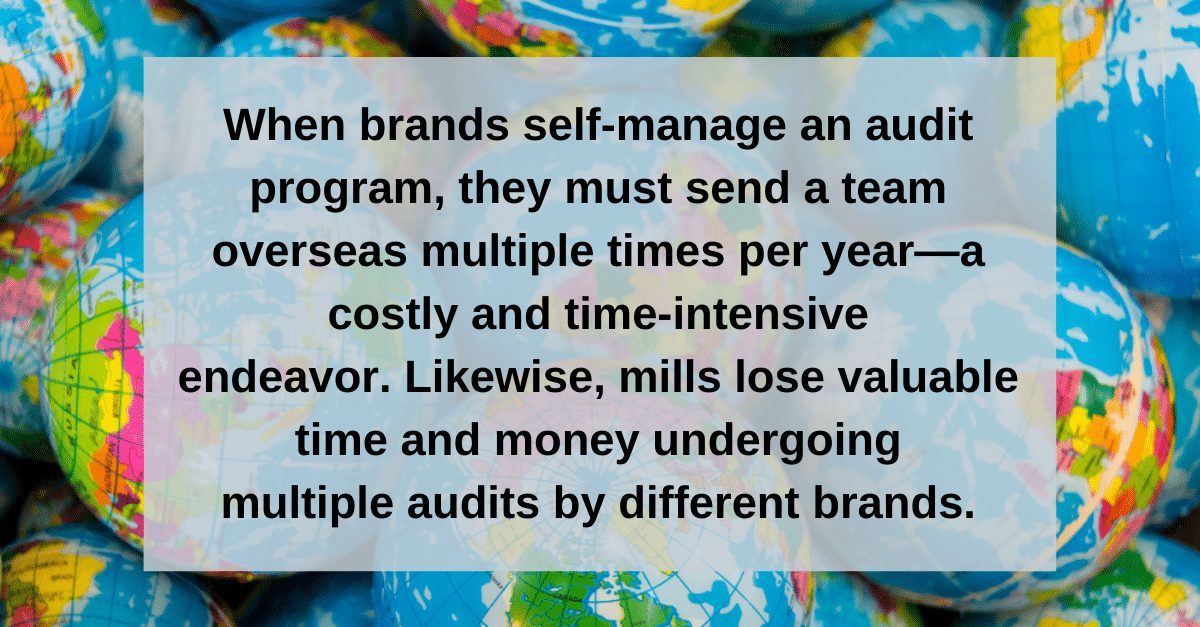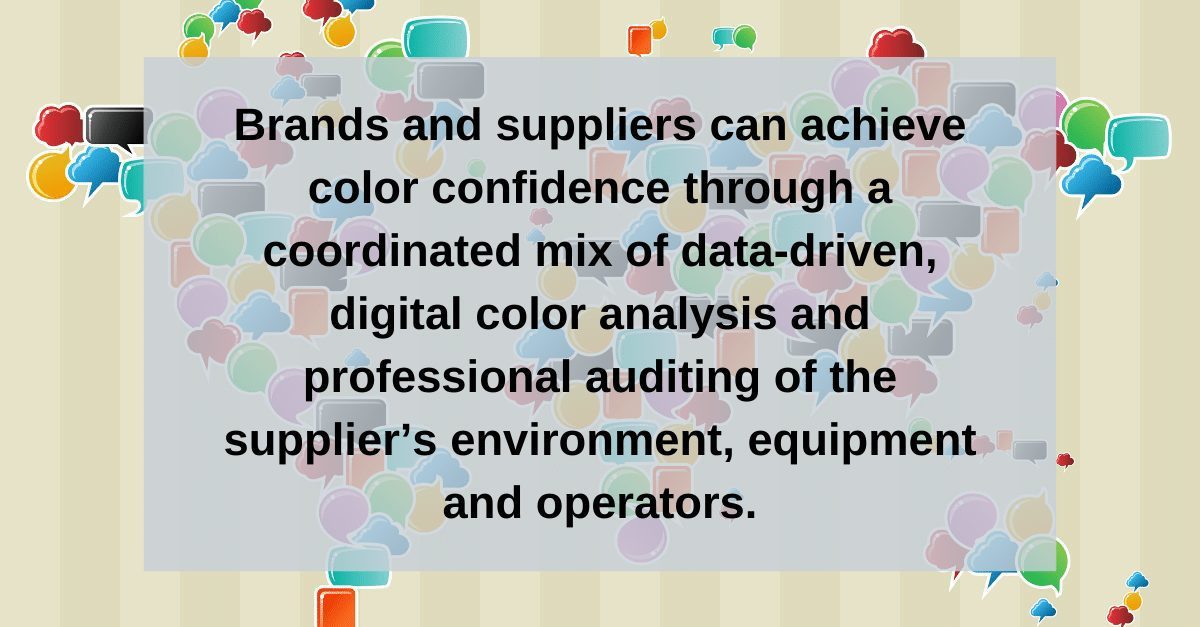Across the textile and apparel supply chain, from concept to retail shelves, it’s no secret timelines are shrinking and missteps are costly. The pressure is on for brands and mills to adapt to globalization, streamline their operations, and deliver quality—faster than ever before. Color decisions remain a bottleneck that can bring production to a grinding halt.
Even if brands adhere to a strictly digitized color evaluation process, they must contend with varying approaches to color management across the supply chain. How do we connect the dots and close that gap, ensuring color decisions are unequivocally correct at every point along the production journey? Transparency is the answer.
A Snapshot of Today’s Textile Supply Chain
In an ideal world, every color decision throughout the supply chain would ladder back to the original design concept—via full transparency—and deliver the brand’s precise color specifications to retailers. But many brands and mills still fall short of this ideal. Myriad factors can impact color management, erecting significant roadblocks that threaten timing and quality.
Immense time pressure—rooted in condensed production cycles intended to meet consumer demand for fast trends—inevitably leads to less accurate decisions. Mistakes must then be corrected further down the production path, which, of course, leads to more time pressure. Convoluted communication exacerbates the problem, as brands and mills track decisions via spreadsheets, phone calls and emails, virtually ensuring that important details will fall through the cracks.

Suppliers barely have time for one round of lab dips. Meanwhile, brands wait weeks for submits to arrive from overseas or spend valuable time traversing continents to conduct on-site approvals.
Ken Butts, a veteran textile industry expert and Global Key Account Manager overseeing Datacolor’s relationships with retailers in the U.S., Europe, China and Hong Kong, sees these challenges firsthand. To avoid these roadblocks, he emphasizes the need for specific functions, whether it be color, fabric, design or fit, to be managed at the point of manufacturing. This doesn’t always happen—to the detriment of budgets and production schedules—but it can happen.
“We know that color quality can be evaluated using numerical tolerances rather than by subjective visual assessment,” Ken says. “By empowering suppliers with the tools to make objective, data-driven color decisions in real-time, we can deliver cost savings, time savings and quality upgrades across the supply chain.”
A Coordinated Effort on a Global Scale
Apparel production doesn’t happen in a single office, country, or even continent. From regional brand color offices to vendors and mills around the world, it’s critical that all players speak the same language around color. Having a consistent fleet of (well-maintained) instruments and software throughout the supply chain means geography is no longer a roadblock to accurate, on-time production.

But the complete solution lies beyond instruments and software. Datacolor’s Assessment Services, a supplier assessment and certification process for visual and digital color development workflows, streamlines global color efforts.
Putting Mill Assessment in Expert Hands
We know that visual color evaluation persists; we also know this methodology is highly subjective and can wreak havoc on a production cycle. By deploying regional color experts to audit mills—whether the supplier manages color visually or digitally—Datacolor Assessment Services can evaluate and verify environmental conditions like temperature and humidity, instrument performance and software configuration, and operators’ expertise, operational procedures, instrument workflow and vision.
When brands self-manage an audit program, they must send a team overseas multiple times per year—a costly and time-intensive endeavor. Likewise, mills lose valuable time and money undergoing multiple audits by different brands. With an established presence in more than 100 countries and over 40 years in the color management space, Datacolor can swiftly evaluate and certify mills. The accreditation is recognized by multiple brands, meaning the cost and time savings reverberate across the supply chain. And brands can breathe a collective sigh of relief, knowing suppliers are making sound decisions that fulfill the creative vision of the design team.

Bringing Color Confidence within Reach
Management of the color lifecycle requires streamlined communication, objective color evaluation tools, and accredited mills with the capability and autonomy to get color right at the most critical stage of production: manufacturing. Brands and suppliers can achieve color confidence through a coordinated mix of data-driven, digital color analysis and professional auditing of the supplier’s environment, equipment and operators.

An agile digital system, coupled with standardized mill accreditation, means brands can optimize their workflow and shift decisions closer to the source of production. Subsequently, mills can operate more efficiently—and market their services more effectively—to ultimately deliver spot-on color every time.










